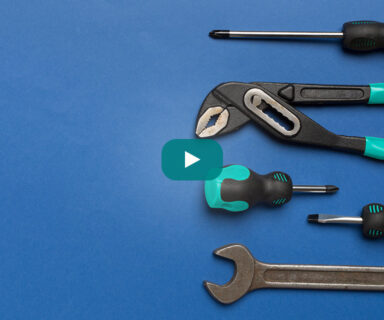Hope is not a strategy – Good customer experiences can’t come from Batch Marketing
 When we have to wait to compile the right data and analytics to know what to do next, we’re operating in “batch mode”. And when we’re in batch mode, by the time we execute our next campaign or tactic, the market and customer situation has probably changed. Thus we’ll always be behind the customer. Our marketing will always be off the mark. That’s not good for customers, so it’s definitely not good for us.
When we have to wait to compile the right data and analytics to know what to do next, we’re operating in “batch mode”. And when we’re in batch mode, by the time we execute our next campaign or tactic, the market and customer situation has probably changed. Thus we’ll always be behind the customer. Our marketing will always be off the mark. That’s not good for customers, so it’s definitely not good for us.
As long as we’re operating in batch mode, our actions are only a scant few ‘highlights’ of activity along a timeline comprising huge gaps. Gaps instead of action. Gaps instead of informed improvement. With the batch approach, we definitely don’t have a continuous integrated strategy leveraging continuous improvement. No, what we’ve got today is dis-integrated strategy. Yet we keep doing it. And we keep hoping it will work.
But hope is not a strategy. Hoping that batch thinking will get us anywhere soon cannot possibly get us to the results we seek.
Nearly the same dynamic is what caused the agile revolution in software development – the lengthy process of waterfall-style development produces cycles that are too long – big batches that often deliver disappointment in the end because the requirements have changed, the market’s moved on.
Modern strategy is continuous and focused squarely on the customer
The agile approach to software development focuses on delivering continuous improvement as a cornerstone of an integrated strategy to deliver better software. Similarly, today’s leading customer experience strategies are all about continuous improvement, agilely evolving marketing on the fly. In fact, for leading growth companies today, continuous improvement for better customer experience is the strategy. It’s what the SaaS revolution is all about. It’s part of “digital transformation”. So when we’re still moving from tactic to tactic, campaign to campaign — because it takes time to get the data, time to understand the data and time to prepare the right thing to do next – we’re shooting ourselves in the foot, because we’re stuck in batch mode. And when we suffer the batch mode blues, our prospects suffer. So business suffers.
What’s still getting in the way of a more agile approach to marketing?

We’re getting better at building content that maps to the buyer’s journey. We’re getting better at offering that content in whatever channel our audiences prefer. Yet because we’re stuck in batch mode in a lot of our processes, we’re not getting much better at responding to what customers are telling us with their behavior. Sure we’re a little better at ‘agile’ on our websites, but off-site, outbound, too many are still stuck in batch mode. Let’s be honest, batch mode is still how we approach marketing automation. And it’s definitely still how we construct our plans.
Adopt data & processes that support integration and continuous experience improvement
A big part of what’s holding us back from being able to react and respond to what our customers are telling us is data-oriented. It’s not just the data itself, it’s equally an issue of how we handle data. Whether it’s monthly for reporting or planning, or queuing it up for execution, the data we’re cobbling together ages with every day that passes. In the meantime, the customer is moving on.
Unlike data assembled and pulled from multiple 1st and 3rd party sources, mixed together and served up for batch campaigns on, say a monthly basis (if you’re really good), new forms of data can be found that directly feed the latest information into our workflows. Today, powerful purchase intent data feeds can update our customer knowledge really fast. Soon, if we change our thinking and our processes to leverage it, we will be able to anticipate scenarios in our planning to react extraordinarily quickly to changes in our prospects’ needs. We will be able to be directly relevant to where they are in their buyer’s journey.
High-Quality Purchase Intent Data Supports Integrated, Agile Marketing for Better Customer Experiences
With real, high-quality purchase intent data, we will finally be out of batch mode. We can then truly join the “Agile” revolution. When we do, our marketing will be able to deliver the kind of integrated experiences that customers expect and deserve.
John Steinert is the CMO of TechTarget where unique purchase intent data solutions are powering the marketing approaches of 100s of technology vendors to the audiences they serve.




